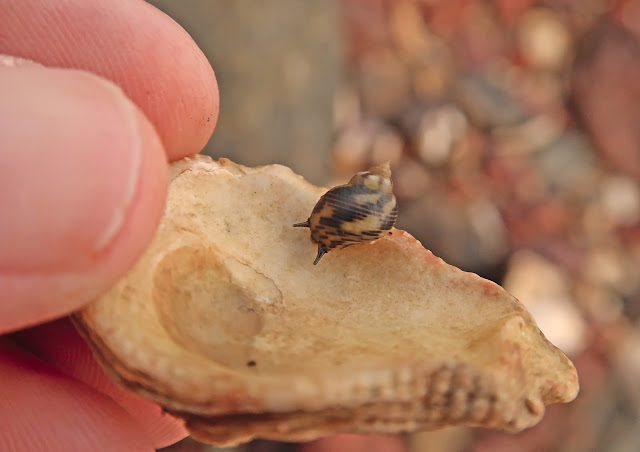On Sunday afternoon, I paid a visit to the Brisbane River at Murarrie for an hour. There, I poked about the rocks and stalked the shoreline to see if I could find some periwinkles to identify, and caught up with a species that has puzzled me ever since I found it at Lamb Island (below) a few weeks ago.
It reminded me of Littoraria luteola in general shape and colour scheme, but was the wrong size and patterning and utilised a different microhabitat, with luteola being arboreal on mangrove trunks and branches. Below is a luteola that I found at Jacobs Well last year.
Also found was the empty shell of a gold-mouthed conniwink (Bembicium auratum).
Whereas the checkerboard periwinkle is found throughout the Indo-Pacific, from India down to Moreton Bay and all the way up to Japan, the conniwink is an Australian endemic, calling our southern estuaries home. These two species co-occurring in the Brisbane River is an example of how in the subtropics, we get the best of both worlds as far as tropical and temperate ecosystems are concerned.





Comments
Post a Comment